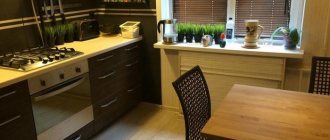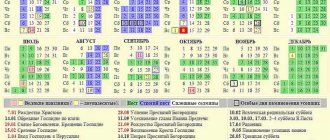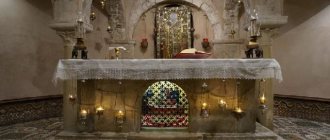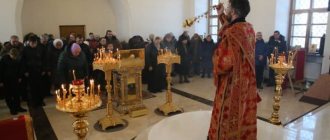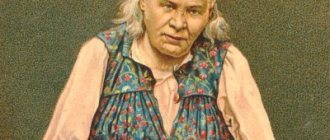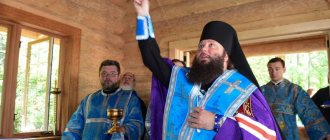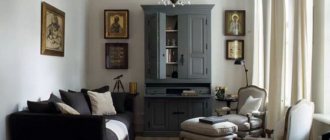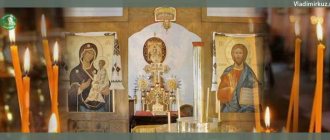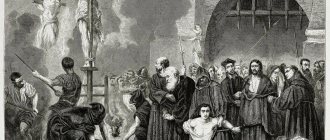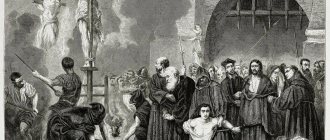The main iconographic types of icons originated in Byzantium; many schools of writing originate from the Byzantine tradition of icon painting: Moscow, Novgorod, Yaroslavl, Rostov, Strogonov, Vladimir-Suzdal and many others. Byzantine culture had a beneficial influence on the aesthetic perception and spiritual development of icon painters of ancient Rus'.
And in our time, Byzantine art refines the boundaries of time, gives our artists the opportunity to come into contact with the era of ancient masters, take an example and adopt all the best of those whose works were the manuscripts of those who saw God's revelation. As the basis for our letter, we took the tradition of the Moscow school of icon painting, the founders of which were Theophanes the Greek, Andrei Rublev, Daniil Cherny, Dionysius. With their brush, they truthfully told about God, the Mother of God and the beloved children of God. Their icons, way of life and thoughts, dedication to their work, serve as an example and role model for us.
But in icon painting, not only the spiritual mood, purity and clarity of thought are important, but also the materials by which the icon is created. In icon painting, everything is subject to strict rules. Neither the writing technique nor the materials used can be random, alien to the established canon. Accidents in an icon happen only by chance, due to inexperience, ignorance, thoughtlessness or arbitrariness of the icon painter. Everything is canonical and ecclesiastical. Church art preserves icon-painting techniques that come from the depths of antiquity.
Board
The basis for the icon must be strong and durable; it personifies the inviolable laws of Existence. Like the stone tablets on which God commanded Moses to record God’s commandments to the people. We use linden boards made from well-seasoned wood with oak dowels, which prevent the board from bending.
Additional images
In addition to these main icons, on the home iconostasis you need to put images of saints after whom your family members are named. It is also advisable to purchase an icon of the healer Panteleimon - a healer of mental and physical illnesses. The choice of other images depends entirely on the needs of the household. For example, you can purchase an image of Peter and Fevronia, to whom they pray for family well-being. In front of the icon of Sergius of Radonezh they ask for help in their studies and good endeavors. Unmarried women can pray before the image of Xenia of St. Petersburg, who, by the will of God, became a helper to people in matters of marriage.
Recently, in many homes, one of the central icons has become the image of the blessed old lady Matrona of Moscow. Even after her earthly death, she helps in everything those who come to her at the Intercession Church or to her grave at the Danilovskoye Cemetery, or simply turn to Matrona in home prayers. Many people have already received healing and help from her. It was not for nothing that she said: “Come to me and tell me everything as if you were alive.” By this, Matrona meant that her earthly death does not mean a spiritual death: after all, she is still with us.
Gesso and pavolok
The task of the gesso painter is to turn the board into a wall, because the surface of the icon board, with its chalk gesso, resembles the wall of a temple, and the icon painting technique originates from the fresco.
Pavolok is glued onto the board and gesso is applied, with strict adherence to traditional recipes. The quality of linen felt and chalk gesso must be treated very carefully; the lifespan of the icon largely depends on them. We do not simplify the technology, we do not use “synthetic gesso”, only chalky, based on hide glue and linseed oil, proven over centuries.
Which shelf should I buy?
Whether you create home iconostases with your own hands from wood or purchase them from a furniture store or church shop is entirely up to you. If you want to buy a shelf, do it in specialized Orthodox stores. There is a wider assortment of iconostases, and the sellers will always advise and help with the choice. Based on the material, wooden and plywood shelves for icons are distinguished. They can be single-tiered or multi-tiered, straight or angular. There are even solid iconostases that already contain holy images. But such shelves are mostly made only to order. To understand what such a home iconostasis looks like, the photo is presented in this article.
If you decide to create a real red corner, choose multi-tiered shelves. On them it will be much easier to recreate a majestic wall with holy images, like those installed in temples. Whether your home iconostasis will be angular or straight depends on where it will be placed (on the wall or in the corner of the room).
Gold
Individual elements of the icon (halo, husk, field, ark), or the entire background are gilded with gold leaf. The golden background of the icon is a pure, unalloyed color, identical to unclouded sunlight. We do not use any imitation gold (potal), only high-quality natural 960 gold, everything in the icon must be truthful and no lies, substitutions, or simplifications are allowed.
Paints
Next, with God's help, armed with fasting and prayer, the icon painter begins the writing stage. Under the artist’s brush, the surface of the board begins to awaken and in the golden radiance of the icon, as if in the sea of Divine Grace, biblical scenes float, images of the Savior, the Mother of God, and saints appear.
What colors should you use to paint an icon? The answer is not difficult to give. The colors express the clearly contemplated essence of things, the spiritual essence of the icon. The choice of colors is not made by the artist, but by the mind of history.
Tempera (PVA) with egg emulsion
For example, modern PVA tempera (artificial pigments on a synthetic basis) with the addition of egg emulsion can achieve good results. Modern cadmiums, cobalts and various oxides are light-resistant, strong and durable, the colors on the icon look bright and rich. They have many advantages, especially with skillful handling and rich experience. Situations often arise when the use of PVA tempera is logical and justified.
Natural mineral pigments
But still, we prefer to paint with the same paints that many generations of icon painters painted before us, with natural pigments. Minerals, semi-precious stones, ocher, earths manually ground with a chime and mixed with yolk.
Nothing can imitate the noble color of natural cinnabar, the purity and depth of lapis lazuli, the delicate green-blue color of dioptase, the solemn golden shine of orpiment and realgar. In addition to their unique and natural color, they convey remarkable optical effects due to the transparent crystalline structure of minerals that actively reflect light. We specifically add quartz to some ocher.
By manipulating the fineness of grinding, it is possible to obtain a color tone of different saturation from the same mineral. Natural pigments produce more transparent and delicate melts. These colors do not fade over the centuries, delighting us with the natural beauty and diversity of the natural palette. It is very difficult to make a high-quality copy of an ancient icon without using the same materials and writing techniques that were used to create the original.
How icons were painted in Rus'
Icon painting in Ancient Rus' was a sacred matter. Strict adherence to canonical instructions, on the one hand, impoverished the creative process, since it limited the possibilities of self-expression of the icon painter, since the iconography of the image, as a rule, was already given, but, on the other hand, forced the artist to focus all his skill, all his attention on the essence " spiritual object”, on achieving deep penetration into the image and recreating it with exquisite visual means.
Traditions and established techniques affected not only iconography, but also the choice of material on which icons were painted, the substance of the soil, the method of preparing the surface for painting, the technology for making paints and, finally, the sequence of writing. When painting icons in Ancient Rus', paints were used in which the binding medium was an emulsion of water and egg yolk - tempera. Icons were most often painted on wooden boards. Usually they took boards from linden, in the North - from larch and spruce, in Pskov - from pine. The board, as a rule, was hewn out of a log, choosing the strongest inner layer of the tree trunk. This process was labor-intensive and lengthy. Boards for icons were made by woodworkers or woodworkers, and rarely by icon painters themselves. A shallow recess was usually made on the front side of the board - an ark, bounded along the edges of the board by fields slightly rising above it. For small icons one board could be used. For large icons, several boards were connected. The nature of the fastening, the depth of the ark and the width of the fields often make it possible to determine the time and place of manufacture of the icon board. The fields of ancient icons of the 11th-12th centuries are, as a rule, wide, and the ark is deep. Later icons have narrow margins, and from the 14th century icons were sometimes painted on boards without borders.
Gesso was used as a primer, which was prepared from chalk or alabaster and fish (sturgeon) glue. The icon board was coated several times with liquid hot glue, then the pavolo was glued on, rubbing it in with the palm of the hand. After the pavolok had dried, gesso was applied. The gesso was applied in several stages, in layers. The surface of the gesso was carefully leveled and sometimes sanded. Sometimes relief was applied to the gesso. In ancient icons, starting from the 12th century, “chasing” was often done on gilded gesso. Sometimes such patterned embossing was done on halos. In later times (from the 16th century), to create an in-depth (or relief) pattern, gesso carving was carried out before writing began. Then the relief was gilded. A drawing was made on the prepared soil surface. First, the first drawing of the images was performed, and then the second, more detailed one. The first drawing was done by lightly touching soft charcoal from birch branches, the second - with black or brown paint. Some icons were reproduced from “originals” or from copybooks obtained from icons that served as samples. After this, the actual writing began. At first, everything that was required was gilded: the fields of the icon, lights, crowns, folds of clothing. Then the pre-letter writing was done, that is, clothes, buildings, and landscapes were painted. At the final stage of creating the icon, the faces were painted. The finished image was covered with a special kind of oil varnish - “oiled”. The work with paints was carried out in a strictly defined sequence. Both the icon writing and its sequence were not the same in different icon painting schools and changed over time. First, the areas limited by the contours of the design were covered with thin layers of appropriate paints in the following order: background (if it is not gold), mountains, buildings, clothes, exposed parts of the body, faces. After this, whitening was done, which highlighted the convex details of objects (except for faces and hands). Gradually adding white to the paint, smaller and smaller areas of highlighting were covered. The final touches were applied with pure white. To create greater volume of the image, a thin layer of dark paint was applied to the darkened and recessed areas. After dark paint, all facial features and hair were drawn in thin lines. Then light highlights were applied to the convex parts of the face: forehead, cheekbones, nose, strands of hair using white or ocher with a large addition of white. Then the “blush” was applied. A thin layer of red paint was applied to the lips, cheeks, tip of the nose, in the corners of the eyes, and on the earlobes. After this, the pupils of the eyes, hair, eyebrows, mustache, and beard were drawn in with liquid brown paint. Samples—“originals”—served as a guide to painting icons. The originals contained instructions on how this or that image should be painted. Tempera painting requires virtuoso technique and a high level of writing culture. This was achieved over many years of apprenticeship. Icon painting was a great creativity. The isographer specially prepared to carry out the “work of icon making.” This was an act of communication with another world and required spiritual and physical cleansing, when everything carnal was suppressed as much as possible: “... when he painted the holy icon, he touched food only on Saturdays and Sundays, not giving himself rest day and night. He spent the night in vigil, prayer and prostrations. During the day, with all humility, non-covetousness, purity, patience, fasting, love, and God-thinking, he devoted himself to icon painting.” Successfully painted images were considered to have been painted not by an icon painter, but by God. Very few names of ancient Russian artists have survived. After all, it was believed that God himself painted the icon with the hands of icon painters, and therefore it seemed inappropriate to name the name of the person whose hands God used. On the other hand, icon painting was truly an intimate communication with another world, and there was no need to name oneself: after all, God himself knows the one who creates the image, or rather, prayerfully and humbly tries to reproduce the prototype. Unfortunately, oil varnish - drying oil darkens over time, and approximately eighty years after application, the varnish film on the icon becomes black and almost completely covers the painting. The icons had to be “renewed”. A new painting was applied, which, according to the artist’s plan, was intended to restore what was hidden under the blackened drying oil. Ancient icons were painted layer by layer. Sometimes a new, different image was painted.
Back to list
Drying oil and varnish
At the final stage, the icon is soaked in linseed oil for several hours, it binds the gesso and the paint layer, the icon becomes monolithic and durable. Drying oil brings paints to a unified overall tone, gives them depth, and unites colors with golden warmth. After the drying oil has dried, the icon can be additionally coated with varnish.
By studying the recipes of ancient masters, we try to draw out the best in them, master interesting techniques, a unique style of writing, understand and comprehend the spiritual aspiration and beauty of the ideals that allowed them to create their masterpieces. The artist’s task is to display the beauty of the earthly world. The icon painter is the Spiritual world, and we strive to fully embody all the experience we have gained in our work, and to make our small contribution to the revival of the ancient traditions of icon painting.
Peace and goodness to you.
Making the corner red
You can decorate your home iconostasis with fresh flowers and willow branches after the Twelfth Feast - the Entry of the Lord into Jerusalem. And on the day of the Descent of the Holy Spirit, shelves with images are framed with birch branches, as a symbol of the grace of the power of God.
You can also install reproductions of images on the shelf for icons. They must first be consecrated and then added to the home iconostasis. Embroider an icon case (frame) for them with beads, and then they will look harmonious with other icons.
